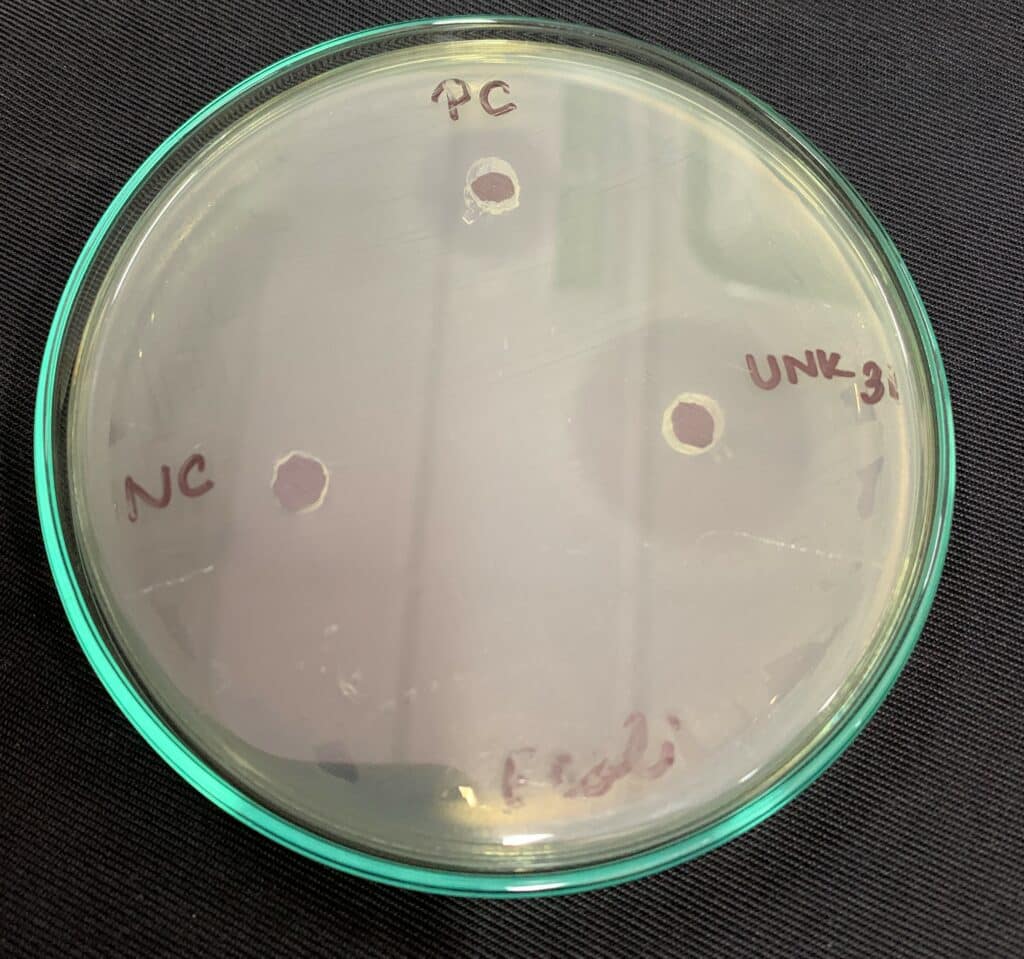Table of Contents
ToggleMuller Hinton Agar in short MHA is widely used as an agar media for the antimicrobial activity determination against tested bacteria. For the purpose of determining an organism’s sensitivity to an antibiotic, particularly in disk diffusion experiments, Mueller-Hinton agar is a popular microbiological growth medium. Species of Neisseria and Moraxella are also isolated and kept alive using this method.
Muller Hinton Agar/ Agar muller hinton
MHA media are very widely used media for different purposes besides antimicrobial activity tests, like for primary screening of bacteria by a perpendicular streaking method. Moreover, Mueller Hinton Agar Media is regarded as the best medium for the Kirby-Bauer disk diffusion method, the cultivation of microorganisms (as a growth medium), the Antibiotic Sensitivity / Susceptibility Test (AST), and other procedures.

Principle of Muller Hinton agar
The Antibiotic Sensitivity Test (AST), which is frequently performed using the Kirby-Bauer Method and rarely using the Stokes Method, is best conducted on Mueller Hinton Agar medium, also known as MHA medium or AST medium. Because of its repeatability, Mueller Hinton Agar has been approved by the WHO Committee on Standardization of Susceptibility Tests for use in assessing the susceptibility of bacteria.
Composition of MHA media
Agar, starch, acid casein hydrolysate, and beef extract are all ingredients in Mueller Hinton Agar. Nitrogen, vitamins, carbon, amino acids, sulfur, and other crucial nutrients are provided by beef extract and casein acid hydrolysate. The Mueller-Hinton agar is a non-selective, non-differential medium that can support the growth of a variety of undemanding organisms. It is referred regarded as a “loose” agar because the antibiotics being tested can spread out across the medium, producing more precise results.
| Ingredients | amount |
| Peptone | 17.5 g |
| Beef extract | 2 g |
| agar | 17g |
| starch | 1.5 g |
| final ph | 7.3 |
Muller Hinton agar Himedia
Mueller Hinton Agar No. 2, which was developed to have low concentrations of thymine, thymidine, calcium, and magnesium, is used to assess the susceptibility of common and quickly growing bacteria employing antimicrobial discs. Himedia MHA media are used frequently by the microbiology lab for determining antimicrobial tests, primary screening, etc. It is available in a 500 g of pack and all the preparation of media is written on the back of the pack. It cost about 5000-7000 per pack.

Preparation of MHA media
For the preparation of MHA media, we do not have prepared so much, the ready-made ingredients were available in the markets, and simply with distilled water the amount are mixed and poured into the Petri plates:
- The amount of MHA media is weighed according to the written protocol on the MHA jar.
- Then the water is added to the MHA powder.
- The solution is homogeneously mixed with the help of an oven.
- Then the solution after the oven was transferred to an autoclave.
- finally, after proper autoclave timing, it is poured into a Petri plate for setting.
- next day it can be used for antimicrobial purposes or other works.
Uses of MHA media
With the Kirby-Bauer disc diffusion method or standard antibiogram, Mueller-Hinton agar is frequently used for assessing antibiotic susceptibility. Thus, for clinical diagnosis, Mueller-Hinton agar is used. Moreover, it is utilized to preserve and isolate Neisseria and Moraxella species.
MCQs/FAQs
What is the full form of MHA?
The full form of MHA is muller Hinton agar.
What is the composition of MHA?
Beef extract, peptone, starch, and agar.
Is MHA media selective or nonselective?
MHA media is non-selective and non-differential.
What is the difference between NA and MHA media?
Mueller Hinton agar is a medium used for assessing the antibiotic susceptibility of bacteria, whereas nutrient agar is mostly used for general bacterial isolation. Hence, this is the primary distinction between Mueller Hinton agar and nutrient agar.









